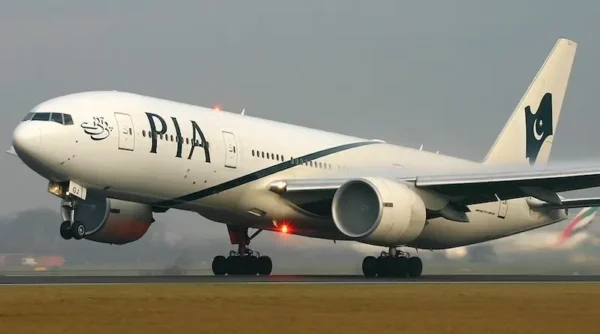Pakistan International Airlines Privatization And The Market’s Response – OpEd

02 September 2024
Published in: EurAsia Review
Scepticism and misinterpretations have tarnished the narrative around the privatisation of Pakistan International Airlines (PIA), particularly in light of recent reports indicating that only a portion of the interested firms are genuine about the acquisition. However, such reports do not convey the entire breadth of the current initiatives or the market’s major interest. Contrary to the dismal image, the Pakistani government remains unwavering in its commitment to privatising PIA, and the market is not only prepared but also actively participating in the process.
The Government’s Firm Stance on the Privatization Deadline
It is critical to recognise that the Pakistani government has made it clear that the PIA privatisation process will not continue beyond the October 1st deadline. This timeline indicates the government’s resolve to complete PIA’s privatisation without delays, assuring the airline’s long-term viability under new ownership.
The decision to meet the deadline is more than just a symbolic gesture; it is a deliberate move to attract serious bidders who recognise the worth of PIA’s assets and its potential for revitalisation. By establishing a definite timetable, the government sends a strong signal to the market that it is serious about making this process transparent, efficient, and following worldwide best practices.
Market Interest: A Comprehensive Engagement Process
The idea that just two out of six companies are serious about acquiring PIA is a ridiculous oversimplification of the current due diligence process. In actuality, all six pre-qualified parties are extensively involved in comprehensive assessments of PIA’s assets, liabilities, and operating framework. It is critical to realise that due diligence in such a large deal is a lengthy process that includes a thorough examination of every facet of the firm. This includes human resources, technological operations, financial health, and tax issues. The fact that these parties have asked more time for due diligence is not a sign of hesitancy, but rather of their commitment to make sound investment decisions.
Furthermore, the engagement of foreign specialists and multinational consortiums demonstrates how serious these corporations are about the possible purchase. While particular names are not given to protect confidentiality, it is known that international airlines are working with local firms in the bidding process, indicating a worldwide interest in the privatisation of PIA.
Financial Considerations and Market Readiness
Critics argue that the possible sale price for PIA may be lower than it would have been eight years ago. However, this view ignores the government’s major restructuring efforts to make PIA a more appealing asset. The transfer of Rs 623 billion in liabilities to a holding company is a deliberate move to clean up the PIA’s financial sheet and increase its appeal to investors.
Furthermore, the government’s offer to sell 51% to 100% of PIA’s shares gives investors the freedom to select an ownership percentage that matches their strategic goals. Several bidders have shown an interest in acquiring 75% or more of the shares, indicating a significant desire to assume control and invest in PIA’s future. This amount of interest should not be underestimated; it demonstrates belief in the airline’s potential under new management.
Addressing Legal and Operational Concerns
Potential investors’ worries about the application of Pakistani law in the event of a dispute are common in international deals. Some bidders choose international arbitration, which is a normal procedure in global commerce that ensures an impartial and fair settlement of disputes. The government’s goal to reconcile these concerns with the need to preserve national interests is a wise approach that will most likely result in a mutually acceptable framework.
Furthermore, the financial constraints linked with PIA, such as the requirement to infuse Rs80 billion in the first year and repay Rs220 billion in obligations, are enormous. However, these obstacles are not insurmountable for serious investors who understand the long-term value of purchasing a national carrier with proven international routes and landing rights. The government’s ongoing financial research, which includes the valuation of these routes and rights, will be essential in deciding the ultimate bid price.
A Strategic Opportunity for Revitalization
The idea that PIA’s privatisation will fetch a low price due to previous losses ignores the larger context of the aviation sector and the special prospects afforded by PIA. The airline’s large network, brand awareness, and potential for expansion in both local and foreign markets make it an attractive asset for the appropriate investor.
Furthermore, the government’s larger privatisation program, which includes electricity distribution businesses, is critical to Pakistan’s economic reform plan. The success of PIA’s privatisation is likely to establish a beneficial precedent for future investments in other areas. This is why the government, with the help of financial advisers and industry experts, is carefully overseeing the process to guarantee a positive conclusion for all parties.
A Market Ready for PIA’s Privatization
In conclusion, portraying the PIA privatisation process as stalled or without real interest is not only false but also contemptuous of the significant efforts and strategic planning now undertaken. The market is prepared to purchase PIA, with many potential buyers actively doing due diligence and developing financial models.
The Pakistani government is dedicated to completing this deal by the October 1st deadline, and the strong interest from both local and foreign partners confirms the potential success of this privatisation endeavour. With the appropriate investor, PIA may be revitalised, bringing fresh vitality and competitiveness to the aviation sector while also contributing to Pakistan’s economic progress.





